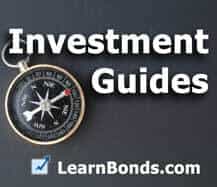
Key Concept: When bonds are originally issued they are issued in the Primary Market. Most bonds continue to trade after issue in what is known as the secondary market.
In the primary market, the price of a bond and the face value (how much you will receive at maturity) are either the same or close to being the same*.
Once a bond starts trading in the secondary market however, there often are significant differences in the current price of a bond and its face value.
Example:
Lets say that Ed buys $10,000 worth of 30 year treasury bonds which pay an interest rate (coupon) of 6%. Every six months like clockwork Ed collects his $300 (6 months worth of interest on $10,000 at 6%).
After 5 years Ed has some unexpected medical expenses and needs the money that he has invested. Luckily for Ed there is an active secondary market in treasuries, so selling his bonds should not be a problem. Odds are however that interest rates have changed since Ed originally bought his bonds, and therefore the price where Ed is going to be able to sell his bonds at will have changed as well.
As interest rates change so does the price of previously issued bonds.
Lets look at how the price of Ed’s bonds would have changed if interest rates on 30 year treasuries, which are being issued at the same time Ed wants to sell his bonds, have changed to 7%. If a potential buyer of Ed’s bonds can go purchase the same bond paying 7%, then Ed is going to have a hard time selling his bond which pays 6%.
It is exactly for this reason that the price of a bond moves throughout its life. Because the coupon interest rate on Ed’s bond is fixed, the only way that he is going to be able to sell his bonds, is if he does so at a price where the $600 a year that his bonds pay equals a 7% return for their new buyer.
There is some simple math we can run through quickly to help illustrate:
As discussed above, at the time that Ed is looking to sell his bonds, the current interest rate being paid on 30 year bonds being issued today is 7%. That means that a buyer today who buys $10,000 worth of 30 year treasuries is going to get $350 every 6 months, which totals his 7% or $700.
While there is nothing that Ed can do to raise the 6% fixed coupon interest payment on his bonds, he can lower the price he sells the bond for. If Ed sells his bonds for $8600 (instead of the $10,000 face value he originally paid) then the same $600 that Ed’s bonds pay now yield 7% to the new buyer. With this in mind although the face value of Ed’s bonds is still $10,000 and the coupon is 6%, the current yield is 7%.
Key Concept: Current Yield is the effective interest rate that you would earn on a bond if you bought it today, and is normally different from the coupon interest payment of the bond.
This lesson is part of our free guide to The Basics of Investing in Bonds. To continue to the next lesson go here.
Trusted & Regulated Stock & CFD Brokers
What we like
- 0% Fees on Stocks
- 5000+ Stocks, ETFs and other Markets
- Accepts Paypal Deposits
Min Deposit
$200
Charge per Trade
Zero Commission on real stocks
64 traders signed up today
Visit Now67% of retail investor accounts lose money when trading CFDs with this provider. You should consider whether you can afford to take the high risk of losing your money.
Available Assets
- Total Number of Stocks & Shares5000+
- US Stocks
- German Stocks
- UK Stocks
- European
- ETF Stocks
- IPO
- Funds
- Bonds
- Options
- Futures
- CFDs
- Crypto
Charge per Trade
- FTSE 100 Zero Commission
- NASDAQ Zero Commission
- DAX Zero Commission
- Facebook Zero Commission
- Alphabet Zero Commission
- Tesla Zero Commission
- Apple Zero Commission
- Microsoft Zero Commission
Deposit Method
- Wire Transfer
- Credit Cards
- Bank Account
- Paypall
- Skrill
- Neteller
What we like
- Sign up today and get $5 free
- Fractals Available
- Paypal Available
Min Deposit
$0
Charge per Trade
$1 to $9 PCM
Visit Now
Investing in financial markets carries risk, you have the potential to lose your total investment.
Available Assets
- Total Number of Shares999
- US Stocks
- German Stocks
- UK Stocks
- European Stocks
- EFTs
- IPOs
- Funds
- Bonds
- Options
- Futures
- CFDs
- Crypto
Charge per Trade
- FTSE 100 $1 - $9 per month
- NASDAQ $1 - $9 per month
- DAX $1 - $9 per month
- Facebook $1 - $9 per month
- Alphabet $1 - $9 per month
- Telsa $1 - $9 per month
- Apple $1 - $9 per month
- Microsoft $1 - $9 per month
Deposit Method
- Wire Transfer
- Credit Cards
- Bank Account



